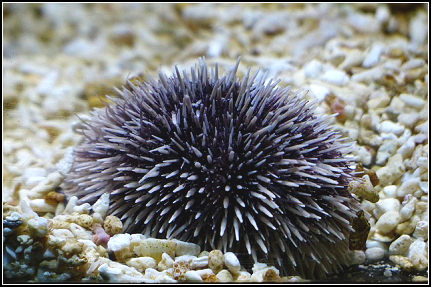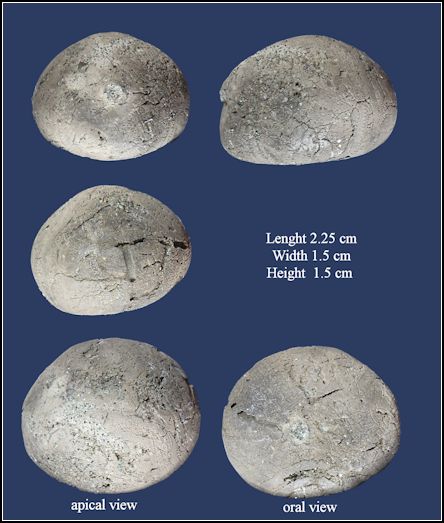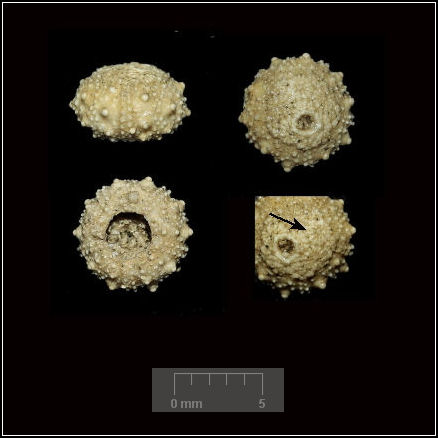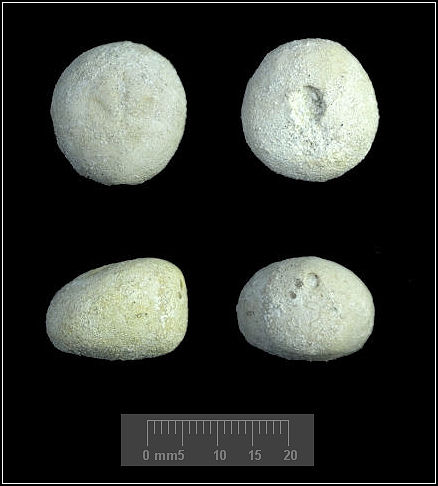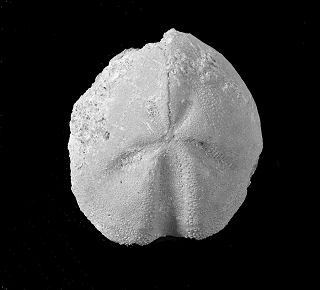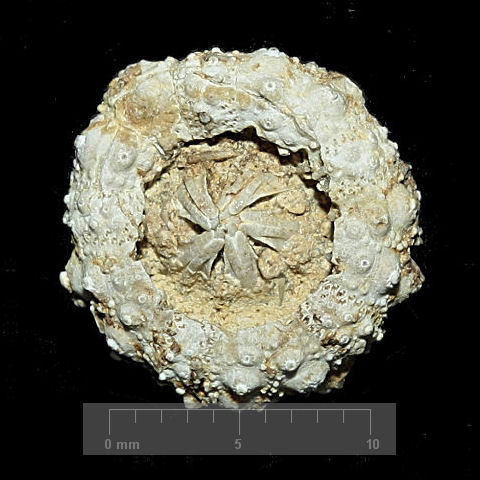|
Sea Urchins Sea urchins are members of a much larger group of marine animals called echinoderms. These include sea stars, brittle stars, crinoids and sea cucumbers. The fossil record shows divergence from sea stars nearly 450 million years ago in the late Ordovician period. There are about 7000 extinct species of sea urchins and about 900 living species. The sea urchin shell or skeleton is called a test, which protects the soft internal organs, and is covered with spines arranged in five broad areas that are separated by narrow unprotected areas. Fragments of the spins and tests can be common place in some locations but finding complete ones can be a challenge.
Modern Sea Urchin╣
Salenia sp.
Hemiaster sp.
An interesting specimen with the chewing organ
preserved.
╣ Photo in public domain |
